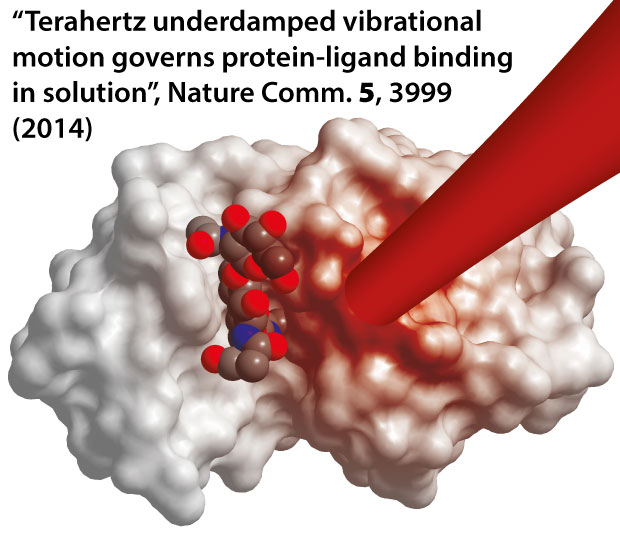Proteins ‘ring like bells’
As far back as 1948, Erwin Schrödinger—the inventor of modern quantum mechanics—suggested that quantum mechanics and coherent ringing might be at the basis of all biochemical reactions. Now, researchers in the group of Prof Klaas Wynne have proven that he was on the right after all.
Using modern laser spectroscopy, the scientists have been able to measure the vibrational spectrum of the enzyme lysozyme, a protein that fights off bacteria. They discovered that this enzyme rings like a bell with a frequency of a few terahertz or a million-million hertz. Most remarkably, the ringing involves the entire protein, meaning the ringing motion could be responsible for the transfer of energy across proteins.
The experiments show that the ringing motion lasts for only a picosecond or one millionth of a millionth of a second. Biochemical reactions take place on a picosecond timescale and the scientists believe that evolution has optimised enzymes to ring for just the right amount of time. Any shorter, and biochemical reactions would become inefficient as energy is drained from the system too quickly. Any longer and the enzyme would simple oscillate forever: react, unreact, react, unreact, etc. The picosecond ringing time is just perfect for the most efficient reaction.






